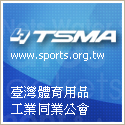Johnson at TaiSPO (2012.03)
JOHNSON at 2012 TaiSPO
Virtual products, real sales – Johnson accelerates its pace
At the touch of a button, you could be running on a little mountain trail in Italy. Or if you prefer, you could be jogging along the beach in California or on a dusty trail in the Grand Canyon.
These are some of the destinations include in the Virtual Active by Matrix equipment. The treadmill reproduces the on-screen terrain. If the user slows down, so does the film. If the trail veers sharply uphill, the treadmill gradient changes to simulate the incline. Complete with surround sound, the Virtual Active program enable treadmill users to feel as if they were actually outdoors on one of these spectacular runs.
The partnership between Johnson Health Tech, the Taiwanese owner of the Matrix brand, and Virtual Active, which develops the programs for the treadmills, began two years ago. It is entering a new dimension this year with more destinations and sophisticated applications. The equipments is found in an increasing number of gyms, and Johnson regards Virtual Active as exactly the sort of interactive services that will enable it to continue making a difference in the gym equipment market.
“We are bringing pretty extreme experiences right into the gym and the living room,” said Daniel Clayton, vice-president of global development at Johnson. “This is one of the many extras we have been working on in the last years, so that the equipment contains more interactive options. It also enables us to cover more price points, because the price range will be built up with options, along the same limes as cars. This is particularly important at a time when gyms are diversifying from the emergence of low-cost gyms to the more service-oriented health clubs.”
All of Johnson’s brands are moving in a similar direction. For example, Horizon, the group’s quality home equipment brand, offers the Innovation Passport, featuring a wireless connection to a television. The user can view the machines’ readout on the TV instead of on the treadmill screen.
“It is a major trend to have a technology platform on the fitness equipment,” Clayton said. “There are already many interactive ways to find out more about the impact of your fitness activity, for example with a heart rate monitor. However, we would like to make the technology platform all-encompassing, so that different tools speak to each other.”
Johnson also wants to widen the use of interactive entertainment devices on fitness equipment. At the higher end of the price range, fitness equipment may already be connected with iPods and iPads, but Johnson wants to open up its applications to non-Apple electronics.
Johnson’s partnership with Lance Armstrong’s foundation, Livestrong, is succeeding. The Livestrong line by Matrix chiefly consists of spinning bikes for gym use, while a separate line focuses on home use. A portion of sales go to the Livestrong Foundation, which helps cancer patients.
Johnson achieved a compound annual growth rate of 28 percent in the five years through 2011. The company describes itself as the third-largest fitness equipment maker in the world and the largest in Asia, with brands including Matrix, Vision Fitness, Horizon and the Livestrong license. Employing just over 5000 people, it ended the year with sales of $467 million, up by 27%.
Sales continue to shift from home to commercial equipment. Only two years ago, about 45% of Johnson’s turnover came from gym equipment, compared with 55% for home use equipment. However, this ratio has been reversed, with 55% of sales in 2011 coming from gym equipment, which yields higher margins. Last year, commercial sales grew faster than the company’s entire turnover with an increase of 37%
Clayton wants the company to continue moving in this direction. “Our target is to treble the size of our commercial fitness equipment business in the five-year period until 0215. Our growth in this market is stimulated by the diversification of the gyms, which gives us opportunities to cater for more categories of products,” he said. Johnson points to the emergence of low-cost gyms, in which members pay as they go to pay only for very basic services. Popular in the U.S. and emerging markets, such gyms have tight budgets and require products that allow intensive use and easy maintenance.
About half of Johnson’s sales come from North America, but other markets are growing, particularly in Asia. Of its 257 stores worldwide, 143 are in China. Another growth market is Brazil, where Johnson has had a subsidiary for the last three years and runs 11 stores.
The company operates three factories covering more than 3 million square feet. Two plants in China produce all of the company’s home fitness equipment and commercial strength machines. Cardio equipment for gym is made in Taichung. The company also owns a components factory in Shanghai so that its production is entirely integrated. The integrated production has enable Johnson to safeguard the quality of its products and keep a handle on the cost of its maintenance.

